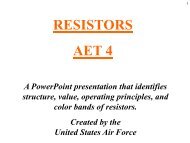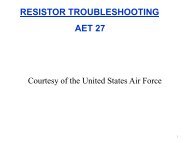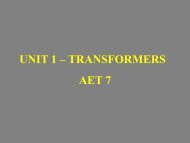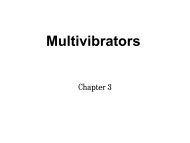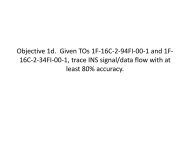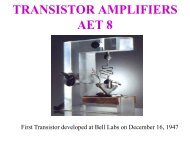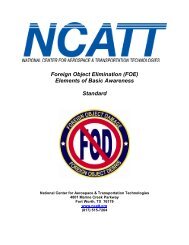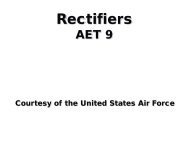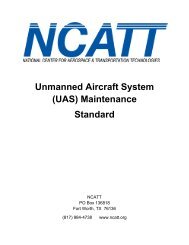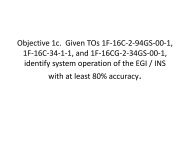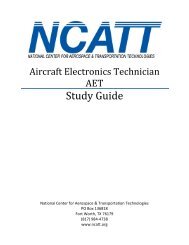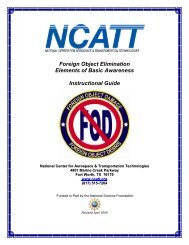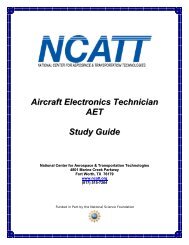(AET) Study Guide - NCATT
(AET) Study Guide - NCATT
(AET) Study Guide - NCATT
- No tags were found...
Create successful ePaper yourself
Turn your PDF publications into a flip-book with our unique Google optimized e-Paper software.
Page 25 of 51Content – RF Energy:There are OSHA standards, other federal standards, and national consensus standards relevant toradio frequency and microwave radiation. Explain the use of RF energy, hazards, and safetyprograms with reference to the following terms:• RF Energy—Radio frequency energy/radiation. RF energy is one form ofelectromagnetic energy that makes up the electromagnetic spectrum. Radio frequenciesare used for providing radar and telecommunications services and for industrialheating and sealing.• Specific Absorption Rate (SAR)—Common measure of exposure to RF energy.• Personal Protective Equipment (PPE)—The use of PPEs takes into consideration keyfactors involved in the identification of hazards to employees (inhalation, skin absorption,ingestion, and eye or skin contact). Personal Protection Equipment is material-hazardspecific and takes into account the performance of PPE materials (and seams) inproviding a barrier to potential hazards.• RF Protection Program—Includes training in normal operation of equipment, supportsuch as periodic screening of employees and facilities, and applicable emergencyprocedures.• Residual Risks—Most RF systems have some residual risks such as high voltages, hotsurfaces, and toxic materials.15. Hazards/Safety Practices <strong>NCATT</strong> Training Standard Level (A)(b) NoiseObjective:Identify basic facts and terms about hazards and safety practices concerning noise.Content – Noise:Explain noise hazards and safety programs with reference to the following terms:• Noise—Refers to a sound, especially one that is noticeably unpleasant and very loud.• Noise Protection Program—Includes training in normal operation of equipment, supportsuch as periodic screening of employees and facilities, and applicable emergencyprocedures.• Allowable Daily Exposure—OSHA has adopted a 90 dB (A) level limit within a daily 8-hour exposure.• Passive Hearing Protection—Earplugs and earmuffs with low-level protection.• Active Hearing Protection—Active Noise Reduction (ANR) earmuffs, headsets, andhelmets containing electronic components that enhance communications. These devicessubstantially improve intelligibility and comfort, which decreases fatigue.15. Hazards/Safety Practices <strong>NCATT</strong> Training Standard Level (A)(c) Electrical PowerObjective:Identify basic facts and terms about hazards and safety practices concerning electrical power.Copyright © 2008 by the National Center for Aircraft Technician Training. All rights reserved.Individuals may download, print, and make copies of this documentfor their own personal use. Commercial use prohibited.



